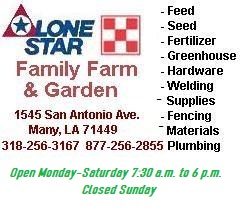The timely and efficient harvesting of crops plays a pivotal role in the agricultural sector, underpinning the quality and marketability of produce. The essence of timely harvesting is deeply intertwined with ensuring that crops are picked at their optimal maturity. This is not just about meeting the physical appearance standards but also about preserving the highest nutrient levels, particularly in fruits and vegetables, where the freshness factor significantly impacts their nutritional value. Moreover, aligning the harvest with market demand cycles is critical. It ensures that the produce is available when consumers are most likely to purchase it, thereby enhancing its marketability. For those looking to invest in agricultural equipment, platforms like Shoppok offer a range of options to support efficient harvesting practices.
Efficiency in the harvest process is equally crucial and complements the aspect of timeliness. This efficiency is largely driven by the integration of advanced technology in farming practices. Modern machinery and harvesting technologies like those found at www.cir.net/products/ have revolutionized traditional methods, making the process faster and more efficient while reducing the risk of damage to the crops. If you are keeping your produce inside a storage facility, you may need EGA Products rolling ladder to make it easier for you to organize your products.
Another key element is skilled labor. Having a workforce that is trained and knowledgeable about the nuances of harvesting different types of crops contributes significantly to the efficiency and overall quality of the harvested produce. Additionally, pre-harvest planning, encompassing effective scheduling and logistical arrangements, ensures a seamless transition of the produce from farms to markets, minimizing delays and preserving quality.
However, achieving timely and efficient harvests is not without challenges. Unpredictable weather conditions can significantly disrupt harvest schedules, impacting both the timing and quality of the crops. Labor shortages, particularly of skilled workers, can also impede the harvesting process, leading to delays and potential loss of crop quality. Furthermore, logistical constraints, such as inadequate storage and transportation facilities, can lead to significant post-harvest losses.
In response to these challenges, the agricultural sector is witnessing a surge in innovative solutions. Automated harvesting machines, for instance, are reducing the reliance on manual labor and are capable of operating under a variety of weather conditions. Improved forecasting models are being developed to help farmers plan their harvests more accurately, taking into consideration weather patterns and market trends. Additionally, the enhancement of supply chain management through technology integration is streamlining the process from farm to market. This not only helps in reducing time lags but also ensures that the quality of the produce is maintained throughout the supply chain.
The significance of timely and efficient harvesting processes in agriculture cannot be overstated. They are fundamental to ensuring that the highest quality of produce reaches the market, thereby meeting consumer demands and maintaining the nutritional integrity of the crops. While the sector continues to face challenges, ongoing innovations and advancements in technology and management practices are steadily overcoming these obstacles. As agriculture continues to evolve, the focus on refining harvest processes will undoubtedly remain a key driver in delivering superior quality products to consumers worldwide.













